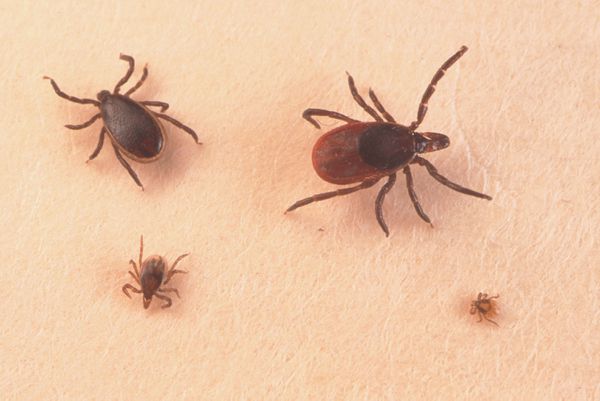Oklahoma’s rainy spring has provided an ideal environment for ticks.
“One thing ticks don’t like is being dry. It’s good news for them,” said Bob Brennan, Ph.D., biology department chair at the University of Central Oklahoma.
That could be bad news for people and their pets, because the pathogens many ticks carry can cause serious diseases.
“Oklahoma tends to be a leader in the country for tick-borne illnesses,” Brennan told The Oklahoman.
Former UCO graduate student Mariah Small collected ticks using dry ice traps and fabric drags for 12 months at Arcadia Lake and Mitch Park in Edmond and gathered approximately 2,500 ticks for her research, Brennan said.
Nine in 10 were Lone Star ticks, which can carry agents that cause ehrlichiosis and Rocky Mountain spotted fever, the two most common tick-borne illnesses in Oklahoma, he said.
Small’s research found about half of the Lone Star ticks she collected carried bacteria that cause Rocky Mountain spotted fever and 15% carried bacteria that cause ehrlichiosis.
“The tick population seems to expand more and more as years go on,” Hagenbuck said.
“This year the tick activity was even earlier. We started seeing ticks emerge the second week of March,” he said. “And last year we saw them all the way into November.”
Throughout winter, ticks feed on rabbits and small rodents before emerging in spring.
Hagenbuck said park visitors can avoid most of the ticks by staying on the trails, but that’s no guarantee.
Ticks are “a necessary nuisance” because they are part of the food chain, Hagenbuck said. They are food for reptiles, opossums, young turkeys, bobwhite quail and other birds.
Tick-borne diseases can be dangerous, causing everything from a food allergy to red meat to miscarriage to death.
“It’s really important when you get home to wash your clothes and do a good tick check,” Hagenbuck said.
Look behind ears, at the collar line on the back of the neck, armpits, joints, waist and groin, and on your socks and shoes. Adults may be easy to spot, but nymphs might look like a freckle, he said.
The earlier you check, the better, said Brennan. In most cases, it takes about 12 hours or longer for a tick to transmit a pathogen to its host, he said.
He recommends a hot shower for yourself and a hot dryer for your clothes. Dry clothing should be dried on high for 10 to 20 minutes. Damp clothing will need longer.
When it comes to repelling ticks, DEET doesn’t work, Hagenbuck said. Instead he recommends applying permethrin to clothing or picaridin to skin.
___
Information from: The Oklahoman, http://www.newsok.com

